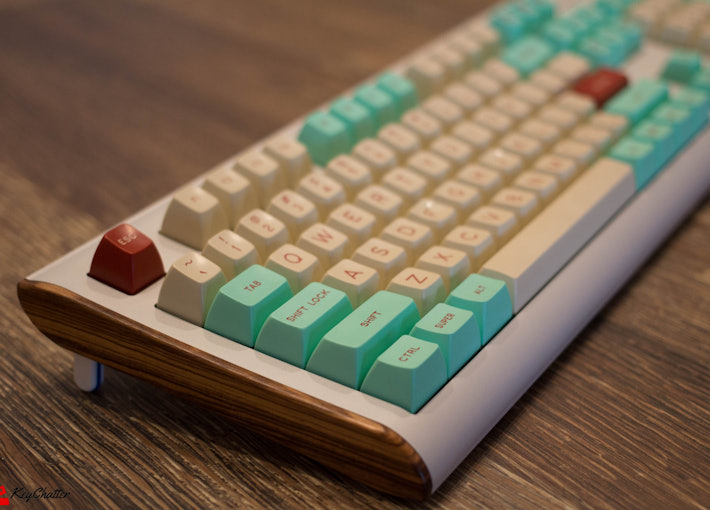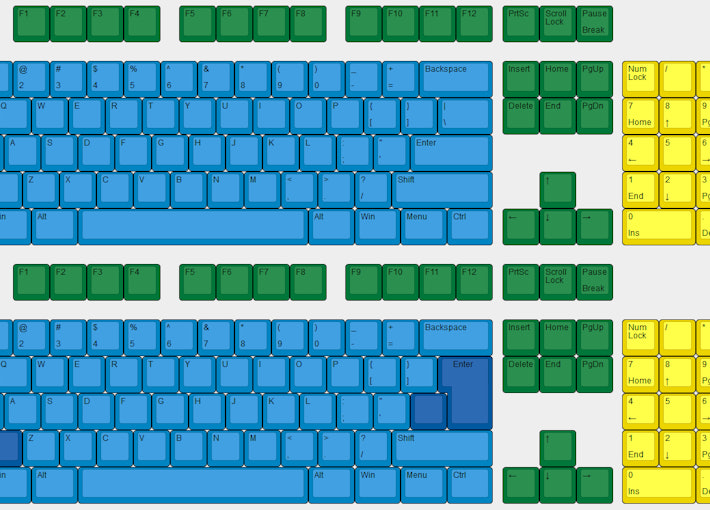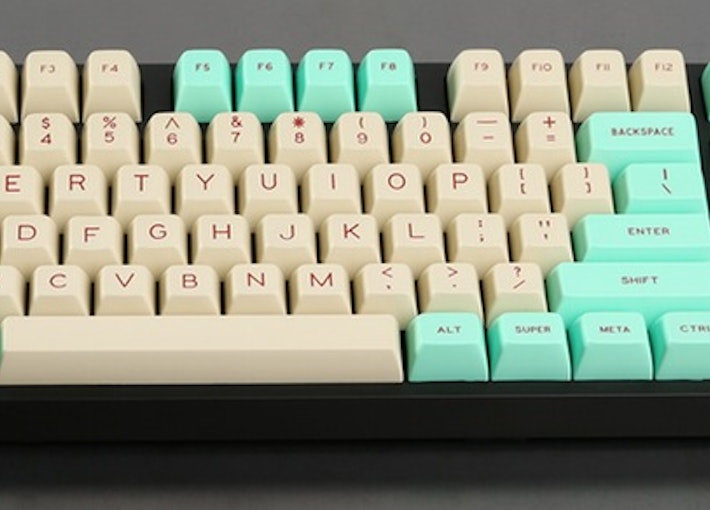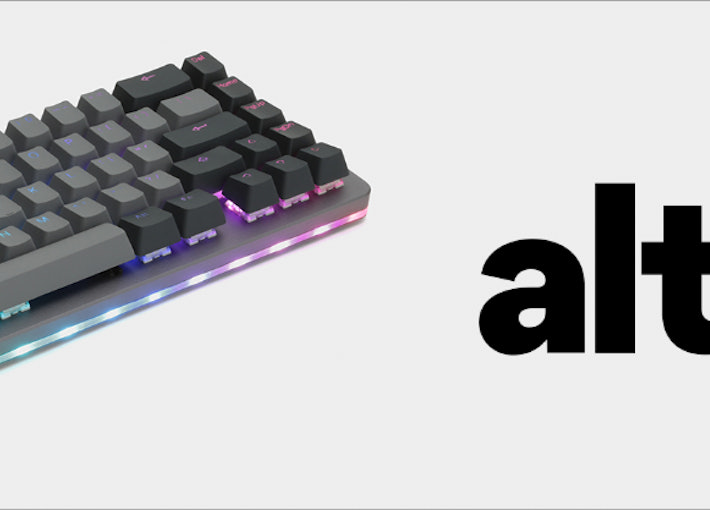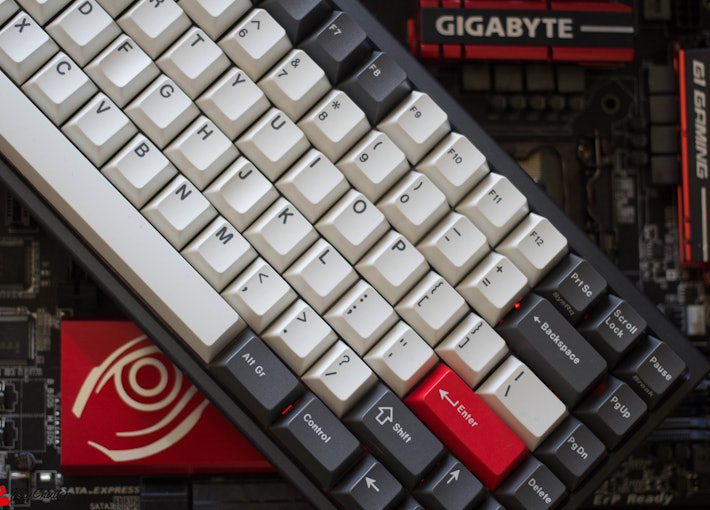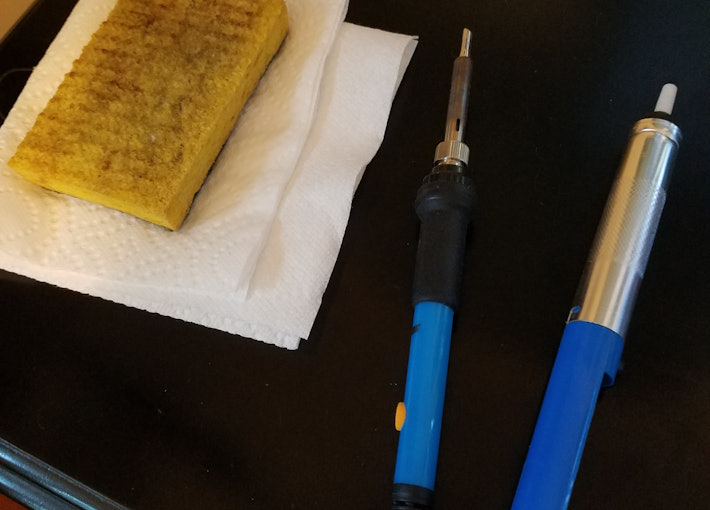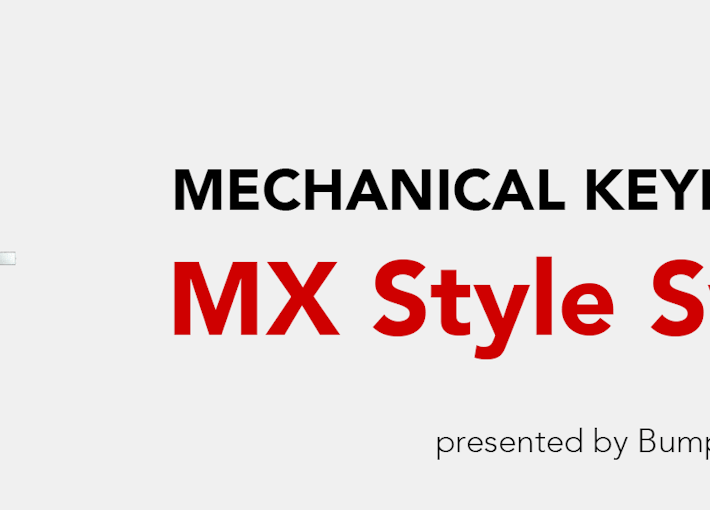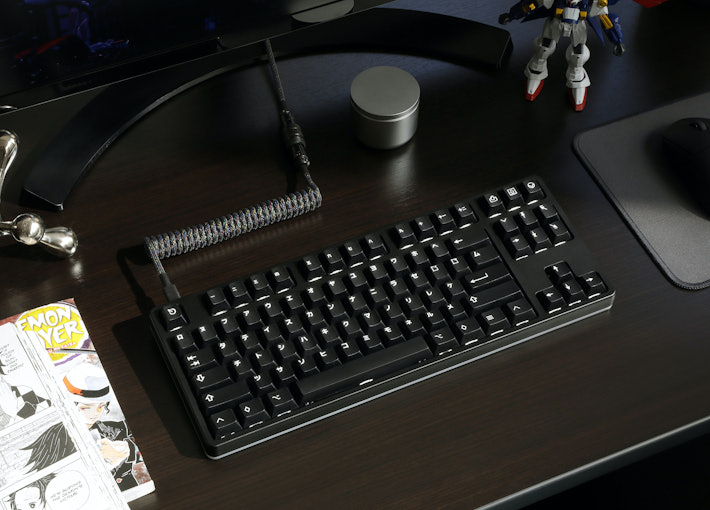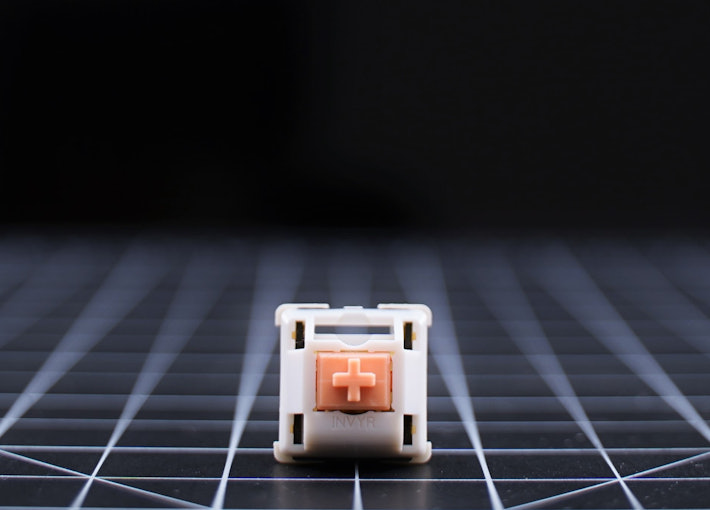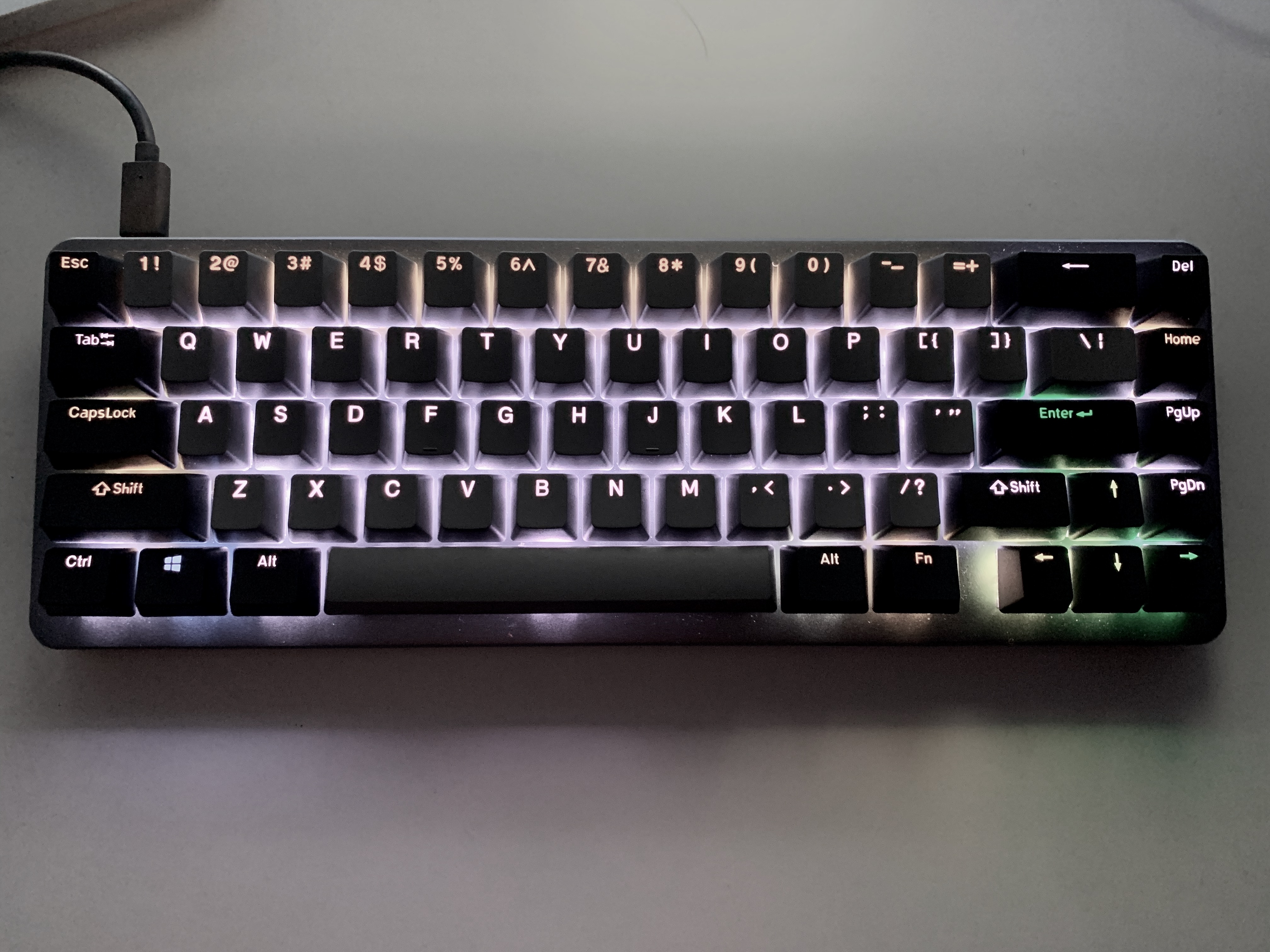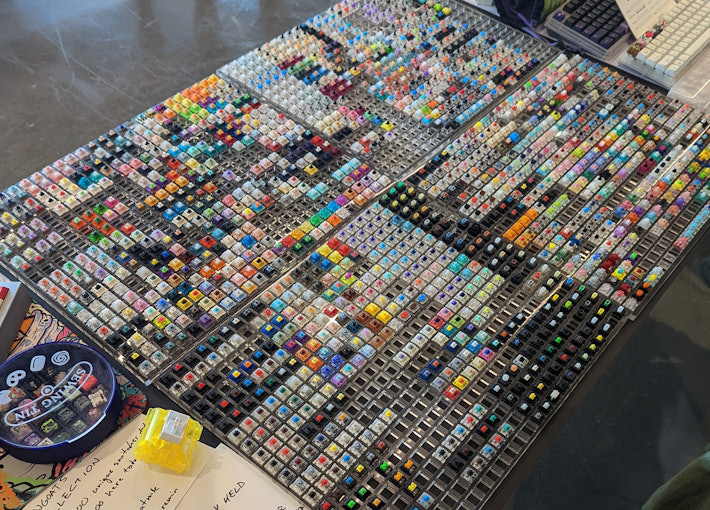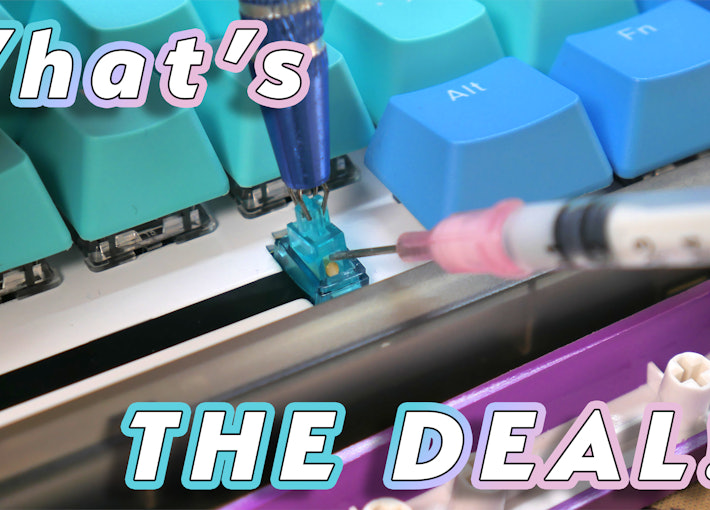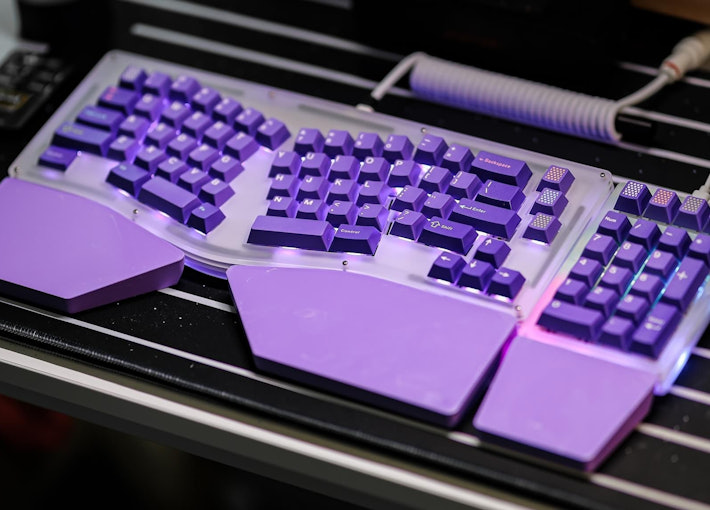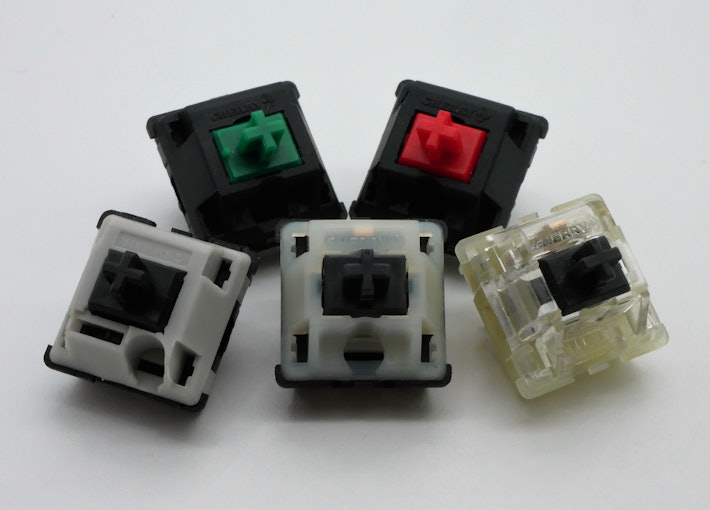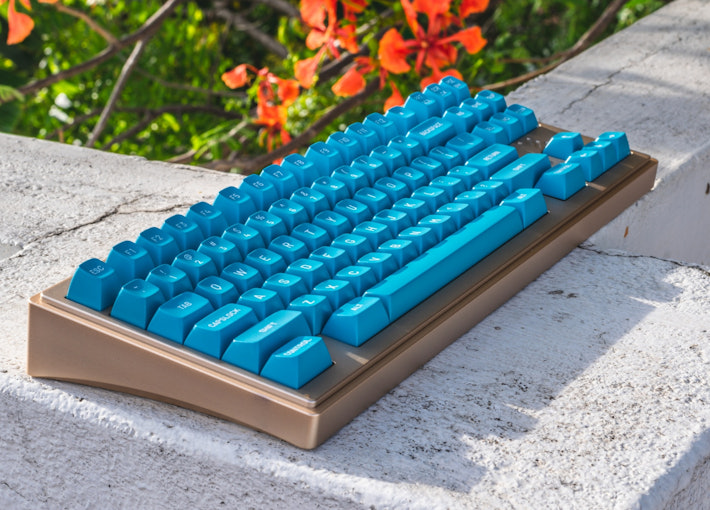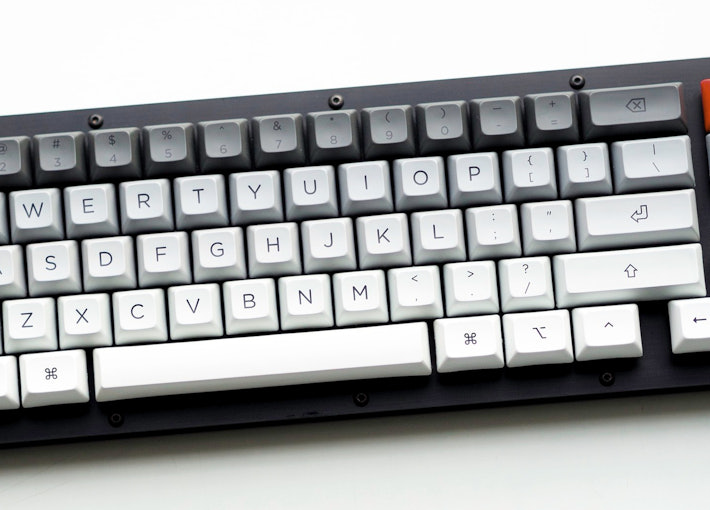Click to view our Accessibility Statement or contact us with accessibility-related questions





















Mechanical Keyboards

livingspeedbump
6723
Nov 29, 2017
Mechanical Keyboards 101 - An Introduction To The Hobby
Introduction
Let’s tackle the first and most obvious question here: “What’s the deal with these mechanical keyboards, and why in the hell would you pay $100+ for one?!” This simple question is unsurprisingly difficult to answer in many ways. Here's one reason and a thousand words worth:
Hate the way this one looks? I guarantee you I can find one you'll adore somewhere!
Mechanical keyboards are more than just a fancy tech accessory or noisy-disco-show to display on your desk. Mechanical keyboards are a full blown hobby with a huge cult following, years of history containing community DIY projects and group buys, dedicated forums (and silly forum drama), niche’s within the niche (like artisan keycaps), and more recently big brand names investing, collaborating, and directly interacting with the enthusiast community.
Personally, I’ve been heavily involved in the mechanical keyboard community for many years. I run KeyChatter.com - a website dedicated entirely to...

livingspeedbump
6723
Dec 16, 2016
Physical Keyboard Layouts Explained In Detail
I thought it would be exceptionally helpful to have a post discussing keyboard layouts, showing what "standard physical layouts" are, and showing what keys differ for many popular alternative layout keyboards. I am not pointing out correct legend placement with these pictures, with programmable boards that would just be a nightmare. It should also be mentioned that I am basing this guide on sculpted profiles (SA, DCS, Cherry, Alps, etc) and NOT uniform profiles like DSA or XDA.
Here is the standard keyboard layout (ANSI and ISO). I have color coded the graphic in this way:
60% - Light Blue
TKL/80% - Green
TK/Fullsize/100% - Yellow
ISO - Dark Blue (Keys that differ from standard ANSI)
So, with this system any keyboard that is covered by light blue/green/yellow caps alone SHOULD be covered by a standard 104 keycap set (like Ducky, Tai Hao, etc). Keep in mind a few more boards can be covered by these sets, just not with the correct profile for each key.
At the end of this article...

livingspeedbump
6723
Sep 1, 2016
What Goes Into Creating A Custom Keycap Set
I've designed a few keycap sets (Jukebox SA and Jukebox Cubic, GMK Honeywell: The Deskthority Set of the Year in 2017, and GMK Mint Dolch). I've collaborated on countless others, and I've picked up a few good tips and tricks for creating a successful keycap set along the way.
Massdrop has been heavily involved in the mechanical keyboard community for a few years now, and has really become one of the go-to places for custom keycap set drops. Before Massdrop most group buys for keycap sets were run on the forums, which had its ups and downs.
Almost two years ago I created the Jukebox keycap set, which ran on Massdrop as their first SA profile drop, with my second run of the set happening earlier this year. Though the overall design (color, profile) stayed the same, many aspects of the kit changes as a result of the ever changing community and popularity of custom sets since my first drop. A lot of thought and consideration went into the second drop, and I thought it may be...

Drop+MechKeys
4362
Aug 24, 2018
How to Configure your Drop Keyboard!
Hey everybody! Thank you for purchasing your Drop Mechanical Keyboard. We hope you’re enjoying it so far. If you’ve landed here, you probably want to take full advantage of the keyboard’s features so you’ve come to the right place.
We’ll start with the basics, then we’ll move on to complete custom configuration.
THE BASICS
Default Hot Keys - All Drop V2 keyboards, SENSE75, and CSTM80
Hold FN + listed keys to activate
LED Keys
Fn + W: LED Brightness Increase
Fn + S: LED Brightness Decrease
Fn + E: LED Animation Speed Increase
Fn + D: LED Animation Speed Decrease
Fn + R: LED Hue Increase
Fn + F: LED Hue Decrease
Fn + T: LED Saturation Increase
Fn + G: LED Saturation Decrease
Fn + Q: LED Toggle (All, Keys, Edge, Off)
Fn + A: LED Next Pattern
Fn + Z: LED Mono Color Mode
Fn + X: LED Breathing Effect
Fn + C: LED Rainbow Mode
Fn + V: LED Rainbow Pinwheel Mode
Keyboard Option Keys
Fn + N: Toggle keyboard 6KRO/NKRO (Default state 6KRO)
Fn + LCtrl + O: Windows /...

Drop+MechKeys
4362
Oct 19, 2018
How to Configure your ALT Keyboard
Hey everybody!
Thank you for purchasing your Drop ALT Mechanical Keyboard. If you’ve landed here, you probably want to take full advantage of the keyboard’s features, so you’ve come to the right place.
We’ll start with the basics, then we’ll move on to complete custom configuration.
THE BASICS
Default Hot Keys
Hold FN + listed keys to activate
LED Keys
Fn + A: LED Pattern - Select previous
Fn + D: LED Pattern - Select next
Fn + Q: LED Pattern - Decrease scrolling speed (for animating patterns)
Fn + E: LED Pattern - Increase scrolling speed (for animating patterns)
Fn + Caps Lock: LED Pattern - Change scrolling direction (left to right, right to left, bottom to top, top to bottom, radial center to edge, radial edge to center)
Fn + W: LED - Increase brightness
Fn + S: LED - Decrease brightness
Fn + Tab: LED - Toggle breathing effect
Fn + X: LED - Toggle all LEDs off/on
Fn + Z: LED - Toggle mode (keys + edge, keys only, edge only, all off)
Fn + R: LED - Increase...

livingspeedbump
6723
Mar 15, 2017
Programming KBD Keyboards via Bootmapper Client (TMK guide getting added soon here!)
I'm used to paying $350+ for custom aluminum keyboards, but was totally shocked when I received my $160 KDB75. The keyboard was packaged extremely well and arrived from China with no flaws, and weighted far more than I was expecting. It weighs more than my RS96. I never was really into the 75% layout, but I was never into the 96 key layout until I tried it, so I figured I'd give it a try since the price was definitely right.
But enough of the "review" part, lets get on to programming this guy. I always like to do guides because I know that being intimidated by programming a custom can often lead to people skipping buys they would otherwise join. This is a very easy one to program, so nothing to be afraid of here!
The first step is to simply download the Bootmapper client found here: https://www.dropbox.com/s/3bn9flirkb49ahz/BootMapperClient.zip?dl=0
After downloading it and running the .exe (I'm on Windows, there is an OSX version as well) you should see something like...

TheSkeleton
3134
Sep 4, 2017
A Quick Guide On Desoldering
A topic that is considered something that most people stay away from and something that scares almost all keeb enthusiasts is desoldering. But if you ever really wanted to change the switches you have on a keyboard or one of your switches breaks then its a necessary thing to know how to do.
I very much needed to do a jailhouse mod to my mx greens so I could have a good school keyboard. So today ill be showing you how to desolder a plank pcb although they will all be done the same just with varying sizes.
Before you start make sure you are careful while doing this its very easy to burn yourself and it is possible to fry your pcb while doing this so make sure you have a good heat and are really careful :)
To start you will need a few things
1. a soldering iron
2. a desoldering pump
3. something to clean the iron
This is what my keeb looks like :3
First you will have to start by taking off the keycaps
then remove the top plate from the case...

livingspeedbump
6723
Jun 27, 2018
Mechanical Keyboard Switches 101 - MX Style Switches
If the heart of a mechanical keyboard is the PCB/Controller, the switches would surely be the soul. Mechanical keyboard switches provide the personality, if you will, and are what really make one keyboard capable of feeling entirely different than another.
For this introduction/guide I will be discussing MX switches, the most common switches currently used in keyboards and keyboard kits being manufactured today. I’ll have a follow up articles on the heels of this one talking about uncommon/vintage switches. I’ll also have a separate guide that covers modding switches, and how to really take a common switch and craft it into exactly what you want. I’m not including that in this guide because I think it is extremely important to be familiar with what is on the market first.
When trying to buy your first mechanical keyboard, researching switches is the most daunting and overwhelming task. The fear of spending a significant chunk of change on something you’ve never tested...

GMK_Andy
149
Dec 13, 2022
How To Design A GMK Keycap Set: An Introduction
One of the most exciting aspects of the mechanical keyboard hobby is how anyone can become more than just a consumer – anyone can give designing a keycap set a shot and become a contributor as well!
I’ve been involved with designing keycap sets long before I worked for GMK – in fact my set Jukebox SA was the very first SA set to run on Massdrop years ago. Since then I’ve designed a few other kits (GMK Honeywell, GMK Mint Dolch) but have concentrated my efforts on helping other designers find good homes for their sets, and I’ve had the absolute pleasure of working directly with many of the designers in the community.
If you want to learn how to design a GMK keycap set (or any other profile – much of what I will go over will be universally helpful for any profile) I’ll be providing multiple articles here to walk you through every step of the process and best practices to use when designing a set. The steps I will go over in detail are as follows:
▪️ Basic overview /...
ThereminGoatMK
402
Nov 30, 2022
Switch Marketing Terms: What to Know and What to Ignore
If you’re just now stepping into the world of custom mechanical keyboards, or trying to expand your switch catalogue for upcoming builds, all of the phrases you may see on a switch sales page can be confusing. Where more seasoned keyboard veterans might scoff at me for making a claim like this, I can assure you that even after having purchased thousands of switches myself I still come across new, strange ways of vendors trying to sell me switches. While I don’t have the space here to go through every single one of the quirky selling gimmicks I’ve seen over the years, I figure it might be worthwhile to give a loose guide to help people out. So, in this article I’m going to cover the things that you need to both look for and ignore when buying your next set of switches!
Type and Manufacturer
Image Credit: @BMa1
While this may seem an incredibly obvious suggestion to be made as something to look out for it, it isn’t entirely without merit. To new people coming into the...
choiway
49
Jan 14, 2020
VIM-ify All Things with the Drop Alt Keyboard
Vim all the things with the Drop Alt Keyboard. After writing code for the better part of five years in Vim and various code editors with Vim keybindings, I went back to a job where I spend a fair chunk of my time writing and editing in Outlook, Word and Excel. As I worked in these other apps I would often wish I had Vim navgiation keys. Microsoft applications do have navigation helpers with the CTRL + arrow keys but they require you to move your hand which, ergnomically, taxes my shoulder. While the thought about how to “Vimify” Office apps kept popping up more and more, I went down the rabbit hole of mechanical keyboards. That’s when I stumbled on to the Drop Alt Keyboard.
The Alt Keyboard is a 65%, RGB backlit, mechanical keyboard that has a couple tricks up its sleeve. First, it has hot swappable switches. Given that I just discovered mechanical keyboards, I thought testing out different switches would be cool. The RGB backlit keys are cool if you’re a gamer but unicorn vomit...
ThereminGoatMK
402
Oct 5, 2022
Introduction to Mechanical Keyboard Switches
By now, we’ve all seen those technology column articles from various news outlets discussing all of the best new mechanical keyboards out there for you to “upgrade your productivity” and “customize your workplace setup.” While some of these articles look at different pre-built options and every so often a truly customizable one, all of these articles fall short on one specific thing: the switch options.
Championed as productivity improvers, strain reducers, and the ultimate personalized touch for your desk at work or at home, these websites unfortunately limit their discussion of mechanical keyboard switches simply to ‘Red’, ‘Blue’, and ‘Brown’ ones. Knowing that there are thousands of more interesting, uniquely designed, and fancifully colored options out there, I can’t help but feel a little sad that first-time buyers think that that is all there is out there for them. Keeping in mind how many new keyboard enthusiasts are sold short on the switch options out there, the team at...

The_Manic_Geek
413
Jan 18, 2023
Best Practices When Building A Keyboard
I don’t like the phrase “it should go without saying”; if that were the case, there would be so many things that never got mentioned, and a lot of things we’d get wrong because of it. This is also true when building your custom mechanical keyboard: there’s a multitude of best practices out there that can, and will, help guide you towards a cleanly built, good-sounding board and an overall positive experience, provided someone *tells* you what those are. Here are some that “should go without saying”, but will be said anyway for those who are new to the hobby, or just getting back in after some time away!
We’ll be focusing on hotswap mechanical keyboards, as those are by and large the most popular kind of PCB for newcomers and veterans alike, though many of our practices will still apply to soldered builds as well. As always, if there’s anything you feel we missed and would like to add, or need further clarification on, feel free to leave a comment below!
Check All Parts Before...

The_Manic_Geek
413
Mar 1, 2023
Identifying Stabilizer Tuning Issues
If you’re in this hobby long enough, you’ll eventually encounter a set of stabilizers (stabs) that, for reasons you can’t quite explain, will not stop rattling or ticking! Even if you followed all of the best practices we previously outlined, and memorized our stabilizer tuning guide, you may still run into a set of stabilizers that doesn’t seem to want to behave. Today, we’re going to clarify the specific functionality of a stabilizer, and demystify what can cause stabilizer issues, split into the three main things that can cause them: the keycap, the switch, or the stabilizer, itself. Bear in mind that while many of these things CAN cause an issue, not all of them are curable through traditional means, so stay with us as we walk you through what can cause stabilizer tuning issues! If some of these don’t seem to be happening with your keyboard, or you’ve encountered SEVERAL ISSUES AT ONCE, we’ll cover that at the end as well.
As always, if you have anything...

HoffmanMyster
2965
Nov 17, 2022
Keycap Materials
Okay, so you’ve decided you want to get some aftermarket keycap sets. What should you look for? Broadly speaking, keycap sets will be split up into three different groups, according to the material they’re made of. In order of abundance, they are:
▪️ ABS
▪️ PBT
▪️ POM
Image Credit: @callmeL
Despite this clean delineation of materials, keep in mind that nothing in the real world of manufacturing is this simple. Different manufacturers will use different material blends (the bulk material may be ABS, but there are all sorts of functional additives that will differ), tooling is different and manufactured/maintained to different standards, and quality standards are different.
In addition to the materials used to manufacture a keycap set, we must also explore a few different “legending techniques” (how the letters that you see on each keycap get there). We’ll focus primarily on the more premium legending options here, but keep in mind that you might come across others in your...
ThereminGoatMK
402
Feb 8, 2023
The Who's Who of Switch Manufacturers
Let’s face it – everything in the world today revolves around brand names. The clothes have to be Supreme or Gucci, the cars have to be Lamborghinis or Porsches, and the cereal better have Toucan Sam on it, or I will go hungry all day. While a lot of these brands have become ingrained into every facet of our lives thanks to social media, television, etc., many people don’t realize just how foreign the appeal of some of these brands would be if we weren’t overly invested in fashion, cars, or breakfast cereals. In much the same way, when people begin stepping into the mechanical keyboard scene they lose complete bearing on what brands represent what. The matter is only further compounded with switches, which have nearly exploded in popularity and number of releases in recent years. So, while I may not be able to give you all of the ins and outs of every single manufacturer out there, here’s an arbitrary amount of the most common brand names in switches that you should be aware of...

HoffmanMyster
2965
Jan 5, 2023
Keycap Profiles
When considering which aftermarket keycap set to get, there can be many different factors to consider. We’ve already discussed the different materials that keycaps can be made from, and of course there is the obvious colorway consideration, but what about the shape of the individual keycaps themselves?
In the early days of the enthusiast keyboard hobby, there were extremely limited options available for aftermarket keycap sets. Unicomp was making replacement keycap sets for buckling spring keyboards and Signature Plastics was making keycap sets compatible with MX switches (GMK had not yet become an option to the enthusiast market - that would come a couple years later).
Now, though? You’d be easily forgiven for being overwhelmed by the number of options available on the market at this point.
Let’s walk through the characteristics that define the various profiles, and cover some of the major profiles you’ll come across.
▪️ Keycap Shape (Spherical, Cylindrical, Flat)
▪️ Sculpted...

Drop+MechKeys
4362
Sep 27, 2021
How to Configure Stack Overflow The Key and The Key V2 Macropad?
Update: If you are here for The Key V2, please see this post below for information regarding flashing an updated stock configuration with hotkeys for changing LED modes and a more user-friendly Copy and Paste default action.
Hey everybody!
Thank you for purchasing your Stack Overflow The Key Macropad. We hope you’re enjoying it so far. If you’ve landed here, you probably want to take full advantage of the keyboard’s custom configuration so you’ve come to the right place.
What Does The Key Come With?
Out of the box, The Key comes built in with three keys that act as the “ctrl”, “c”, and “v” keys. It also includes a USB-C to USB-A cable to connect to your computer. Users that only have USB-C ports would need to provide their own USB-A to USB-C adapter.
How do I configure The Key?
Creating a New Custom Configuration
The Key can be reconfigured and remapped so that each key press results in a different character, or set of characters. Users commonly find it helpful...

sbstjn
48
Jan 30, 2018
Guide to build a 68% Keyboard
Over the last weeks I built a 68% Mechanical Keyboard, based on the layout of the Magicforce68 and Varmilo VA68M. I documented all steps and wrapped everything in a tutorial website available at https://68keys.io. With the SA Grade keycaps it has a nice industrial look and feel, what do you think?
With the content on 68Keys.io, you can build your own custom 68% Keyboard! Sounds great, right? You will find all information about the needed Circuit Board, Aluminium Case, and modified TMK firmware on the site. With the detailed shopping list, you can start ordering parts and dive into building your mechanical keyboard right away.
As you can see on the images, I use a simple Sandwich Case right know, do you know of any companies that offer custom Aluminium cases? I know this will be expensive compared to the current case, but it's the last missing piece in the puzzle ;)

dovenyi
42
Jul 25, 2023
Short intro into split keyboards
If you think keyboard customization is mostly about switches and keycaps, let me draw your attention to the extraordinary – and often extraordinarily overlooked – split and ergonomic keyboards.
Splits may look weird and scary for the uninitiated, but the scene is thriving for a good reason. The fact that split keyboards are all over nowadays makes it even stranger that many people, myself included, may discover them only after typing on classic keyboards for decades. On my blog I've been featuring them for years, literally hundreds of them, so I'm very excited to have the opportunity to be your guide into the world of split keyboards.
Why splits?
One obvious answer would be ergonomics, but this could be misleading. Sure, people with existing health issues (RSI, carpal tunnel syndrome) may try to alleviate discomfort or pain developed on classic keyboards by turning to splits, while some others use them as a preventive measure. However, an even larger segment of split...










